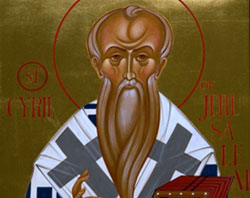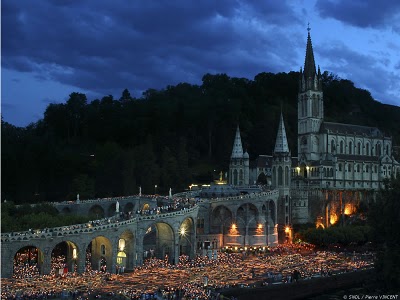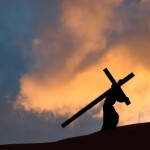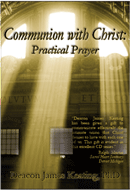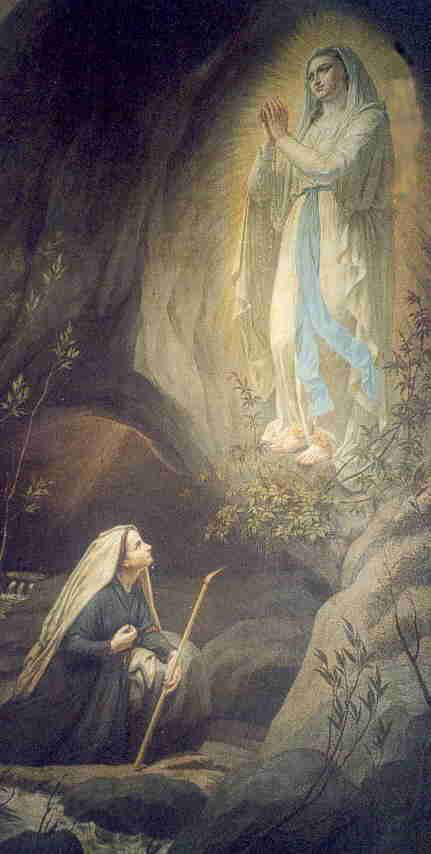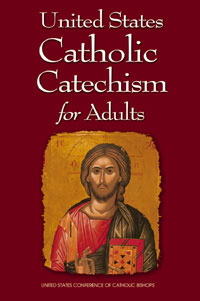Episode 22 Beginning to Pray: Â St. Catherine of Siena
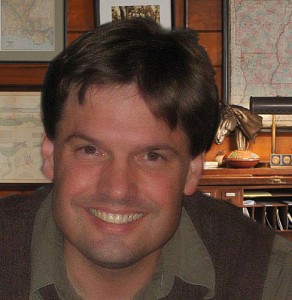
[powerpress]
From Dr. Lilles’ “Beginning to Pray” Â blog site:
Catherine of Siena – passion for truth
She is an important figure for those who see a rediscovery of prayer as the force of renewal in the Church. Because she put her devotion to Christ first, she found herself with a spiritual mission to help restore the life and unity of Christ’s body. Some of her efforts met with a little success. But as she approached her death at the age of 33, her lifetime of effort in building up the Church seemed to be in vain. Corruption, scandal, cowardice – and most of all indifference – seemed to infect the Church even more. (For more on her life, go tohttp://www.newadvent.org/cathen/03447a.htm.) Yet she never lost hope and she persevered in prayer. This is because she understood the love and mercy of God.She was uneducated, but in 1377, by a miracle, she learned to write. Even so she retained secretaries to whom she dictated most of her thoughts. Her master work on the spiritual life is known as the Dialogues. These are conversations between her soul and God the Father. God the Father reveals his deep love for his Son and his plan to build up the Church. One of the beautiful aspects of this conversation is the Father’s explanation for how each soul can come to know Jesus.
Christ is the bridge to the Father and we cross this bridge by allowing our hearts to be pierced by what the Lord has done for us. The passion of Christ reveals at once the truth about who God is and who we are in his sight. For her, among the greatest blocks to the spiritual life is ignorance. Knowledge of God and knowledge of self go hand in hand in progressing toward spiritual maturity. But the knowing is not simply an intellectual trip. It as the kind of knowing informed by the loving affection of a real friendship. The friendship she describes in tender terms evokes the deepest joys and sorrows all at once.
The gift of tears, so central to early Dominican spirituality, is a beautiful part of this description. She presents those holy affections as the only proper response to the great love revealed in Christ crucified. These tears move us away from sin and into the very heart of God. She describes this as a journey that begins with kissing the feet of Jesus and entering into his wounded side. For her, intimacy with the Lord is always through the Cross and informed by a profound gratitude and humility.
One other beautiful feature of her spirituality is her understanding of virtue. This understanding is not quite classical in that she goes beyond the generic definition of a virtue as a good habit. Instead, she addresses a problem that is related to life in the Church. She notices that different Christians excel at different virtues. One might have a special aptitude for the art of getting on with others and is a special source of justice in the community. Another may be especially able to enter into the heart of someone enduring great difficulty and brings to the Church a particular awareness of mercy. Still another might have a profound gift of prayer. The question she takes up is why has the Father given different gifts to different members of the Body of Christ.
In the Dialogues, the Father explains to her that He has distributed his bountiful gifts in this way so that each member of the Body of Christ must rely on all the other members and at the same time each member bears a particular responsibility to support the Body of Christ commensurate to the gifts he has been given. In other words, his has distributed his gifts in a manner that disposes us to love one another. And the Father is counting on this mutual love, this genuine fellowship. It is part of His plan that as we cross Christ the Bridge we enter into communion with Him not merely individually, but together as a family.
The family of God requires a new kind of love, a love which only God can give us. A beautiful foundation is laid for what will later be understood as a “call within a call,” that particular mission each one is entrusted with in the eternal loving plan of God. On one hand, answering this call involves some suffering – just as Mother Theresa in our own time discovered. But those who endure this would not have it any other way. There is a certain joy and fullness of life that one discovers when one generously embraces the loving plan of the Father. The possibility of this joyful fulness makes Catherine’s message to the Church dynamically attractive.
For those beginning to pray, Catherine sheds light on the importance of truth, devotion to Christ and the life of the Church. These things organically hang together in her vision of the spiritual life so that growing in prayer goes beyond the merely therapeutic: it opens up the possibility of fully thriving, of living life to the full.
Dr. Anthony Lilles is a Catholic husband and father of three teaching Spiritual Theology at St. John Vianney Theological Seminary. He  teaches spiritual theology and spiritual direction to transitional deacons, and the spiritual classics to the men who enter the Spirituality Year, a year of prayer in preparation for seminary formation.  He is the author of the “Beginning to Pray”  catholic blog spot.
For other episodes in the series visit the Discerning Hearts page for Dr. Anthony Lilles
Tags: Anthony Lilles, Church, prayer, spiritual life, st catherine of siena
This entry was posted on Monday, April 29th, 2013 at 7:26 am
You can follow any responses to this entry through the RSS 2.0 feed.
(Vatican Radio) The destructive force of calumny was the focus of Pope Francis’ homily for MassÂ
celebrated with staff from the Vatican’s telecommunications office and internet services. Emer McCarthy reports:
[powerpress]
The Pope drew inspiration from the daily readings, in particular the first reading that recounts the episode of Stephen, the first martyr of the Church, being dragged before the Sanhedrin because of his witness to the Gospel. Pope Francis noted that Stephen was a victim of calumny. He is accused of “false witness†but it is not a “fair fight, a fight between good menâ€, noted Pope Francis, because Stephen’s enemies chose the path of a dirty fight, “the path of calumnyâ€. Calumny he continued is worse than sin – it is the direct expression of Satan.
“We are all sinners; all of us. We all commit sins. But calumny is something else. It is of course a sin, too, but it is something more. Calumny aims to destroy the work of God, and calumny comes from a very evil thing: it is born of hatred. And hate is the work of Satan. Calumny destroys the work of God in people, in their souls. Calumny uses lies to get ahead. And let us be in no doubt, eh?: Where there is calumny, there is Satan himself. ”
From the behaviour of the accusers, Pope Francis then turned his attention to the accused. Stephan, he noted, does not return falsehood with falsehood: “He does not want to go that way to save himself. He looks to the Lord and obeys the law”, being in the peace and truth of Christ. And that Pope Francis said “is what happens in the history of the Church”, because from the first martyr until today there have been numerous examples of those who have witnessed to the Gospel with great courage:
“But the age of martyrs is not yet over, even today we can say, in truth, that the Church has more martyrs now than during the first centuries. The Church has many men and women who are maligned through calumny, who are persecuted, who are killed in hatred of Jesus, in hatred of the faith: some are killed because they teach the catechism, others are killed because they wear the cross … Today, in many countries, they are maligned, they are persecuted … they are our brothers and sisters who are suffering today, in this age of the martyrs”.
And again Pope Francis repeated “The age of martyrs is not yet over, the Church has more martyrs now than during the first centuries”. This age of “such great spiritual turmoil†reminded the Pope of an ancient Russian icon that depicts Our Lady covering the people of God with her mantle:
“We pray to Our Lady to protect us, and in times of spiritual turbulence the safest place is under the mantle of Our Lady. She is the mother who takes care of the Church. And in this time of martyrs, she is the protagonist, the protagonist of protection: She is the Mother. (…) Let us state with faith: Mother, the Church is under your protection: Care for the Church. ‘”
Text from page http://en.radiovaticana.va/news/2013/04/15/pope:_calumny_destroys_the_work_of_god_in_people/en1-682926
of the Vatican Radio website
Tags: Church, martyrs, Pope Francis, work
This entry was posted on Saturday, April 27th, 2013 at 12:13 pm
You can follow any responses to this entry through the RSS 2.0 feed.
Mike Aquilina offers us deep insight on the life of St. Cyril of Jerusalem.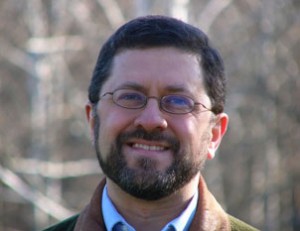
[powerpress]
More on St. Cyril of Jerusalem from vatican.va:
BENEDICT XVI’s GENERAL AUDIENCE
Paul VI Audience Hall
Wednesday, 27 June 2007
Dear Brothers and Sisters,
Our attention today is focused on St Cyril of Jerusalem. His life is woven of two dimensions: on the one hand, pastoral care, and on the other, his involvement, in spite of himself, in the heated controversies that were then tormenting the Church of the East.
Cyril was born at or near Jerusalem in 315 A.D. He received an excellent literary education which formed the basis of his ecclesiastical culture, centred on study of the Bible. He was ordained a priest by Bishop Maximus.
When this Bishop died or was deposed in 348, Cyril was ordained a Bishop by Acacius, the influential Metropolitan of Caesarea in Palestine, a philo-Arian who must have been under the impression that in Cyril he had an ally; so as a result Cyril was suspected of having obtained his episcopal appointment by making concessions to Arianism.
Actually, Cyril very soon came into conflict with Acacius, not only in the field of doctrine but also in that of jurisdiction, because he claimed his own See to be autonomous from the Metropolitan See of Caesarea.
Cyril was exiled three times within the course of approximately 20 years: the first time was in 357, after being deposed by a Synod of Jerusalem; followed by a second exile in 360, instigated by Acacius; and finally, in 367, by a third exile – his longest, which lasted 11 years – by the philo-Arian Emperor Valens.
It was only in 378, after the Emperor’s death, that Cyril could definitively resume possession of his See and restore unity and peace to his faithful.
Some sources of that time cast doubt on his orthodoxy, whereas other equally ancient sources come out strongly in his favour. The most authoritative of them is the Synodal Letter of 382 that followed the Second Ecumenical Council of Constantinople (381), in which Cyril had played an important part.
In this Letter addressed to the Roman Pontiff, the Eastern Bishops officially recognized Cyril’s flawless orthodoxy, the legitimacy of his episcopal ordination and the merits of his pastoral service, which ended with his death in 387.
Of Cyril’s writings, 24 famous catecheses have been preserved, which he delivered as Bishop in about 350.
Introduced by a Procatechesis of welcome, the first 18 of these are addressed to catechumens or candidates for illumination (photizomenoi) [candidates for Baptism]; they were delivered in the Basilica of the Holy Sepulchre. Each of the first ones (nn. 1-5) respectively treat the prerequisites for Baptism, conversion from pagan morals, the Sacrament of Baptism, the 10 dogmatic truths contained in the Creed or Symbol of the faith.
The next catecheses (nn. 6-18) form an “ongoing catechesis” on the Jerusalem Creed in anti-Arian tones.
Of the last five so-called “mystagogical catecheses”, the first two develop a commentary on the rites of Baptism and the last three focus on the Chrism, the Body and Blood of Christ and the Eucharistic Liturgy. They include an explanation of the Our Father (Oratio dominica).
This forms the basis of a process of initiation to prayer which develops on a par with the initiation to the three Sacraments of Baptism, Confirmation and the Eucharist.
The basis of his instruction on the Christian faith also served to play a polemic role against pagans, Judaeo Christians and Manicheans. The argument was based on the fulfilment of the Old Testament promises, in a language rich in imagery.
Catechesis marked an important moment in the broader context of the whole life – particularly liturgical – of the Christian community, in whose maternal womb the gestation of the future faithful took place, accompanied by prayer and the witness of the brethren.
Taken as a whole, Cyril’s homilies form a systematic catechesis on the Christian’s rebirth through Baptism.
He tells the catechumen: “You have been caught in the nets of the Church (cf. Mt 13: 47). Be taken alive, therefore; do not escape for it is Jesus who is fishing for you, not in order to kill you but to resurrect you after death. Indeed, you must die and rise again (cf. Rom 6: 11, 14)…. Die to your sins and live to righteousness from this very day” (Procatechesis, 5).
From the doctrinal viewpoint, Cyril commented on the Jerusalem Creed with recourse to the typology of the Scriptures in a “symphonic” relationship between the two Testaments, arriving at Christ, the centre of the universe.
The typology was to be described decisively by Augustine of Hippo: “In the Old Testament there is a veiling of the New, and in the New Testament there is a revealing of the Old” (De catechizandis rudibus 4, 8).
As for the moral catechesis, it is anchored in deep unity to the doctrinal catechesis: the dogma progressively descends in souls who are thus urged to transform their pagan behaviour on the basis of new life in Christ, a gift of Baptism.
The “mystagogical” catechesis, lastly, marked the summit of the instruction that Cyril imparted, no longer to catechumens but to the newly baptized or neophytes during Easter week. He led them to discover the mysteries still hidden in the baptismal rites of the Easter Vigil.
Enlightened by the light of a deeper faith by virtue of Baptism, the neophytes were at last able to understand these mysteries better, having celebrated their rites.
Especially with neophytes of Greek origin, Cyril made use of the faculty of sight which they found congenial. It was the passage from the rite to the mystery that made the most of the psychological effect of amazement, as well as the experience of Easter night.
Here is a text that explains the mystery of Baptism: “You descended three times into the water, and ascended again, suggesting by a symbol the three days burial of Christ, imitating Our Saviour who spent three days and three nights in the heart of the earth (cf. Mt 12: 40). Celebrating the first emersion in water you recall the first day passed by Christ in the sepulchre; with the first immersion you confessed the first night passed in the sepulchre: for as he who is in the night no longer sees, but he who is in the day remains in the light, so in the descent, as in the night, you saw nothing, but in ascending again you were as in the day. And at the self-same moment you were both dying and being born; and that water of salvation was at once your grave and your mother…. For you… the time to die goes hand in hand with the time to be born: one and the same time effected both of these events” (cf. Second Mystagogical Catechesis, n. 4).
The mystery to be understood is God’s plan, which is brought about through Christ’s saving actions in the Church.
In turn, the mystagogical dimension is accompanied by the dimension of symbols which express the spiritual experience they “explode”. Thus, Cyril’s catechesis, on the basis of the three elements described – doctrinal, moral and lastly, mystagogical – proves to be a global catechesis in the Spirit.
The mystagogical dimension brings about the synthesis of the two former dimensions, orienting them to the sacramental celebration in which the salvation of the whole human person takes place.
In short, this is an integral catechesis which, involving body, soul and spirit – remains emblematic for the catechetical formation of Christians today.
Tags: Church, doctor of the church, faith, father of the church, mike aquilina, mysteries, st cyril of jerusalem
This entry was posted on Monday, March 18th, 2013 at 12:04 am
You can follow any responses to this entry through the RSS 2.0 feed.
The New Evangelization, during this Year of Faith, has experienced an incredible moment with the Papal Conclave convened to elect the 265th successor to St. 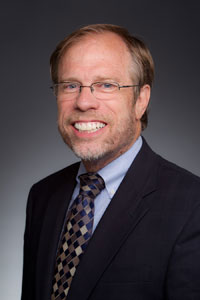 Peter!  We had a chance to talk with someone on the ground covering this historic moment first hand…Gregory Erlandson.  As Publisher and President of the Our Sunday Visitor Publishing Division, Greg brings incredible insight on what is occurring at this historic moment having spent years in Rome reporting on the activities of our universal Church.  In our conversation, we discuss the unprecedented numbers of  media outlets from around the world covering the event and what that might mean for the New Evangelization.  Is there an “American Moment” occurring at this conclave as some suggest, and if so, what could this unexpected influence have on the Papal Election and the Church around the world?  Gregory Erlandson, besides being one of the wisest (as well as nicest) men I know,  is truly a balanced seeker of truth and a master communicator of the beauty offered by our Catholic faith…no hype here, but always with an encouraging call to deeper prayer and trust.
Peter!  We had a chance to talk with someone on the ground covering this historic moment first hand…Gregory Erlandson.  As Publisher and President of the Our Sunday Visitor Publishing Division, Greg brings incredible insight on what is occurring at this historic moment having spent years in Rome reporting on the activities of our universal Church.  In our conversation, we discuss the unprecedented numbers of  media outlets from around the world covering the event and what that might mean for the New Evangelization.  Is there an “American Moment” occurring at this conclave as some suggest, and if so, what could this unexpected influence have on the Papal Election and the Church around the world?  Gregory Erlandson, besides being one of the wisest (as well as nicest) men I know,  is truly a balanced seeker of truth and a master communicator of the beauty offered by our Catholic faith…no hype here, but always with an encouraging call to deeper prayer and trust.
[powerpress]
 From Greg’s blog posting at the OSV Blog:
From Greg’s blog posting at the OSV Blog:
So, what are the chances that we will have an American pope? If the forecasts are correct (a big if), and if the received wisdom is at all wise, the American options become more likely if the first ballots do not signal a clear front-runner – Cardinals Angelo Scola, Odilo Scherer and Marc Ouellet perhaps – capable of winning two-thirds of the votes.
ÂWhat dramas play out in the Sistine Chapel and in the conversations taking place back in the cardinals’ “hotel” we may not find out for months, but Vatican observers, for perhaps the first time ever, are not discounting the Americans, and that in itself is a big deal.
Tags: American Moment, Church, Gregory Erlandson, osv, sistine chapel
This entry was posted on Tuesday, March 12th, 2013 at 6:56 pm
You can follow any responses to this entry through the RSS 2.0 feed.
Thomas Craughwell in,  “Popes Who Resigned: Benedict Xvi and 13 Other Popes Who Retired (or Were Deposed)“, has once again proven why his writing is so fascinating and enjoyable. He never shys away from the uncomfortable fact. He presents the information with the peace and good humor which comes from the hindsight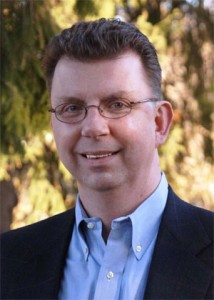 afforded by history and a knowledge of a God who eventually brings all things into in order despite his earthly children’s  best efforts to mess things up. We can learn much from a particular moment or action of human behavior in the curse of human history, and with Thomas Craughwell’s keen eye not much is missed. In this particular case, we can rest assured that the Barque of St. Peter sails the seas of human history helmed by the Holy Spirit more than by the hands of man, otherwise it would of crashed on the seashore of time long ago.
afforded by history and a knowledge of a God who eventually brings all things into in order despite his earthly children’s  best efforts to mess things up. We can learn much from a particular moment or action of human behavior in the curse of human history, and with Thomas Craughwell’s keen eye not much is missed. In this particular case, we can rest assured that the Barque of St. Peter sails the seas of human history helmed by the Holy Spirit more than by the hands of man, otherwise it would of crashed on the seashore of time long ago.
[powerpress]
The stories contained here are short and to the point, each representing a fascinating period in Church history. I appreciated his insights on the unique circumstances and personalities of Bl. John Paul Ii and Pope Benedict XVI, and why each chose the course they took in regards to their decisions to either remain or leave their role as Supreme Pontiff.
I am a big fan of Thomas Craughwell’s work…I wasn’t disappointed.
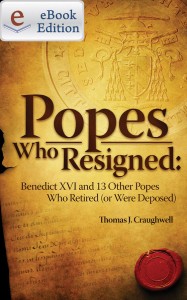 You can obtain the book here
You can obtain the book here
From the book description:
On February 11, 2013, Pope Benedict XVI shocked Catholics and the world by announcing that he would resign from the papacy. It was the first papal resignation in 600 years, and it has caused Catholics the world over to scramble for answers. Now, in Popes Who Resigned, Thomas J. Craughwell answers those burning questions, including:
– Why did Benedict XVI resign… and why didn’t John Paul II?
– What does the Catholic Church teach about papal resignation?
– Who were the other popes that resigned, and why?
– And much more.
In these tumultuous times, Craughwell points even now to the rock that is the Catholic Church, digging into Canon law and Church history for answers. Popes Who Resigned is a must read for Catholics and non-Catholics alike who are trying to make sense of Benedict XVI’s resignation and what it means for the papacy, the Church, and the world.
Tags: catholic church, Church, holy spirit, Thomas Craughwell
This entry was posted on Thursday, February 28th, 2013 at 11:55 am
You can follow any responses to this entry through the RSS 2.0 feed.
Episode 33- Regnum Novum: Bringing forth the New Evangelization through Catholic Social Teaching with Omar Gutierrez –  We continue the study of the “Compendium of the Social Doctrine of the Church” Â Chapter 7 – What is “economics” and why does the Church have a role in how it is lived out? Â Who are the poor? Â How are we called to live out our Catholic faith in the area of the “economy”?
We continue the study of the “Compendium of the Social Doctrine of the Church” Â Chapter 7 – What is “economics” and why does the Church have a role in how it is lived out? Â Who are the poor? Â How are we called to live out our Catholic faith in the area of the “economy”?
[powerpress]
CHAPTER SEVEN
ECONOMIC LIFE
I. BIBLICAL ASPECTS
a. Man, poverty and riches
b. Wealth exists to be shared
328. Goods, even when legitimately owned, always have a universal destination; any type of improper accumulation is immoral, because it openly contradicts the universal destination assigned to all goods by the Creator. Christian salvation is an integral liberation of man, which means being freed not only from need but also in respect to possessions. “For the love of money is the root of all evils; it is through this craving that some have wandered away from the faith†(1 Tim 6:10). The Fathers of the Church insist more on the need for the conversion and transformation of the consciences of believers than on the need to change the social and political structures of their day. They call on those who work in the economic sphere and who possess goods to consider themselves administrators of the goods that God has entrusted to them.
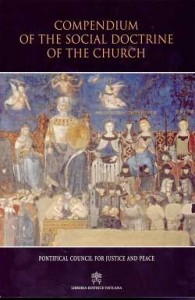
We live at a very special time. The confluence of many things has brought forth the clear need to be able to articulate the Social Teaching of the Catholic Church in a way that is accessible and applicable. This is not to be an effort where high-minded theories are to be bandied about. Rather, this is a time of opportunity wherein we can apply the Social Doctrine to the concrete so as to bring about a New Kingdom, a Revolution. – Omar G.
Also visit Omar’s “Discerning Hearts” page Catholic Social Teaching 101
Tags: catholic social teaching, Church, social doctrine, work
This entry was posted on Wednesday, February 27th, 2013 at 9:50 pm
You can follow any responses to this entry through the RSS 2.0 feed.
Episode 1 -Stations of the Cross: Reflections with Deacon James Keating –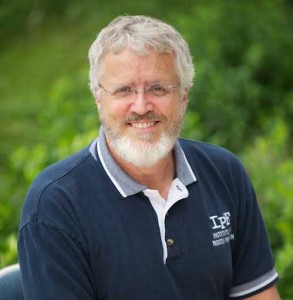
The Stations of the Cross – one of the most powerful devotionals alive in the heart of the Church.  While Reflecting  deeply on the Passion of the Christ, Deacon Keating guides us through the 1st and 2nd station along the Way of the Cross.
For other episodes in the “Stations of the Cross” series click here
Deacon James Keating, PhD, the director of Theological Formation for the Institute for Priestly Formation, located at Creighton University, in Omaha, is making available to â€Discerning Hearts†and all who listen, his series of programs entitled “Stations of the Cross: Reflections with Deacon James Keatingâ€.
For more information on the “Institute of Priestly Formation†and for other material available by Deacon Keating, just click here
Don’t forget to pickup a copy of “Communion with Christ†,it is one of the best audio sets on prayer…ever!
Check out Deacon Keating’s “Discerning Heart†page
Tags: Church, creighton university, Deacon James Keating, Deacon Keating
This entry was posted on Friday, February 15th, 2013 at 7:47 am
You can follow any responses to this entry through the RSS 2.0 feed.
From the official Lourdes website (visit it …. it’s fantastic!)
On 11th. February 1858 Bernadette, her sister Toinette and a friend of theirs, Jeanne, went looking for wood on the meadows and led towards “the place where the canal rejoins the River Gave”. They were in front of the Grotto of Massabielle. Toinette and Jeanne crossed the icy water, crying out with the cold; Bernadette hesitated to do this because of her chronic asthma. She heard “a noise like a gust of wind”, but “none of the trees were moving”. “Raising her head, she saw, in a hollow of the rock a small young lady, who looked at her and who smiled at her. This was the first Apparition of the Virgin Mary
More from the official site
On 25th. March 1858, the day of the sixteenth Apparition, Bernadette went to the Grotto, and on the instigation of the Parish Priest, Abbé‚ Peyramale, asked the Lady for her name. Three times Bernadette asked the question. On the fourth request, the Lady responds in dialect “Que soy era Immaculada Conception“. (“I am the Immaculate Conception”). Bernadette does not understand immediately the meaning of these words. The Immaculate Conception is, as the Church teaches, “Mary, conceived without sin, thanks to the merits of the Cross of Christ”. (The definition of the Dogma of the Immaculate Conception 1854) She goes to the Parish Priest to tell him the Lady’s name. He understands that it is the Mother of God who has appeared at the Grotto of Massabielle. Later the Bishop of Tarbes, Monseigneur Laurence, confirms this.
The Immaculate Conception is, as the Church teaches, “Mary, conceived without sin, thanks to the merits of the Cross of Christ”. Thus the Immaculate Conception is also the sign of what all people, recreated by God are called to be.
A prayer to Our Lady of Lourdes by Pope John Paul II
[powerpress=”devotionals-prayers”]
Hail Mary, poor and humble Woman,
Blessed by the Most High!
Virgin of hope, dawn of a new era,
We join in your song of praise,
to celebrate the Lord’s mercy,
to proclaim the coming of the Kingdom
and the full liberation of humanity.
Hail Mary, lowly handmaid of the Lord,
Glorious Mother of Christ!
Faithful Virgin, holy dwelling-place of the Word,
Teach us to persevere in listening to the Word,
and to be docile to the voice of the Spirit,
attentive to his promptings in the depths of our conscience
and to his manifestations in the events of history.
Hail Mary, Woman of sorrows,
Mother of the living!
Virgin spouse beneath the Cross, the new Eve,
Be our guide along the paths of the world.
Teach us to experience and to spread the love of Christ,
to stand with you before the innumerable crosses
on which your Son is still crucified.
Hail Mary, woman of faith,
First of the disciples!
Virgin Mother of the Church, help us always
to account for the hope that is in us,
with trust in human goodness and the Father’s love.
Teach us to build up the world beginning from within:
in the depths of silence and prayer,
in the joy of fraternal love,
in the unique fruitfulness of the Cross.
Holy Mary, Mother of believers,
Our Lady of Lourdes,
pray for us.
Amen.
Tags: Church, dogma of the immaculate conception, immaculate conception, our lady of lourdes, Parish Priest, sin, st. bernadette
This entry was posted on Monday, February 11th, 2013 at 12:14 am
You can follow any responses to this entry through the RSS 2.0 feed.
He just gets better and better.  Of course, I’m talking about Mike Aquilina and his joy and enthusiasm for the Catholic Church 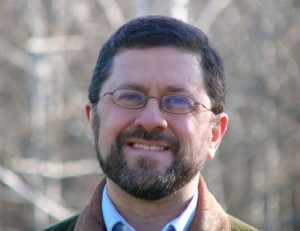 abounds in “Yours is the Church:  How Catholicism Shapes Our World“.  Mike is so good at getting to the nuggets contained in history and reminding us all of the significant contributions made by the Church which have changed our world for the better.  Whether it is the moral leadership it has offered which has been the rudder steadying our course, or the beauty of the arts which fashion it’s sails, the barque of the Church sails the seas of time on a course to the New Jerusalem.  Putting it all into a wonderful historic perspective, Mike Aquilina offers us a “must have” book that should be in every Catholic home and given to anyone joining this beautiful Church of ours.  Thanks Mike!
abounds in “Yours is the Church:  How Catholicism Shapes Our World“.  Mike is so good at getting to the nuggets contained in history and reminding us all of the significant contributions made by the Church which have changed our world for the better.  Whether it is the moral leadership it has offered which has been the rudder steadying our course, or the beauty of the arts which fashion it’s sails, the barque of the Church sails the seas of time on a course to the New Jerusalem.  Putting it all into a wonderful historic perspective, Mike Aquilina offers us a “must have” book that should be in every Catholic home and given to anyone joining this beautiful Church of ours.  Thanks Mike!
[powerpress]
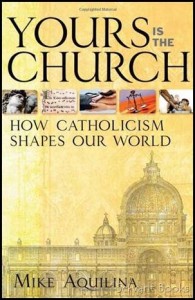 Your can find the book here
Your can find the book here
“Christianity has radically changed the world for the better.  In a book that’s both thoughtful and entertaining .  Mike Aquilina shows how the Gospel really has been the good news in the most practical ways possible.  Even the atheist ought  to thank…whoever he thanks….for the rise of Christianity.” — David Mills, executive editor of First Things
Tags: catholic church, Church, mike aquilina, New Jerusalem
This entry was posted on Monday, February 4th, 2013 at 1:22 pm
You can follow any responses to this entry through the RSS 2.0 feed.
Fr. Mitch Pacwa, a leader on the front line of the New Evangelization, once again provides a tremendous resource to enter more deepl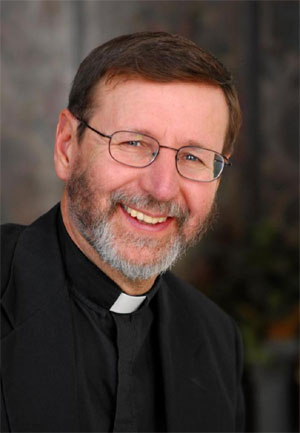 y into this Year of Faith!
y into this Year of Faith!
Steeped in the Divine Wisdom found in our Sacred Scriptures and enlightened by the teachings of the Church, and in particular the insights of Pope Benedict XVI, this is a book not to be missed. Â This is a great resource that can be used by individuals, as well as study groups. Â In this particular discussion, Fr. Pacwa also expands on the events of history that have brought us to this point in our culturally challenge era. Â He shares the importance of the examples found in the lives of the saints, and the call we all have to grow in holiness.
[powerpress]
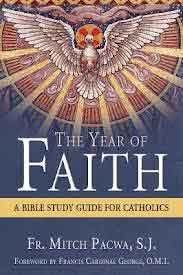 You can find it here
You can find it here
“Dioceses and parishes will benefit from an extremely helpful guide to celebrate this important year. I heartily recommend Father Pacwa’s insightful reflections.” —Bishop Robert J. Baker, S.T.D., Diocese of Birmingham in Alabama
Fr. Mitch Pacwa, S.J., Senior Fellow of the St. Paul Center for Biblical Theology, is a Jesuit priest and popular television host of several EWTN television and radio programs, including EWTN Life and The Holy Rosary in the Holy Land.
Tags: Church, Mitch Pacwa, new evangelization, our sunday visitor, Sacred Scriptures
This entry was posted on Monday, December 10th, 2012 at 6:42 am
You can follow any responses to this entry through the RSS 2.0 feed.
“Remember always…a tranquil conscience and an assured innocence produce a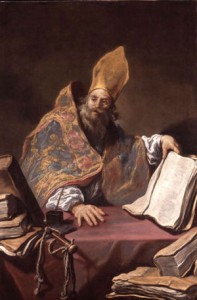 blessed life”
blessed life”
Saint Ambrose (c. between 337 and 340 – 4 April 397), was a bishop of Milan who became one of the most influential Church figures of the 4th century. Mariologist, heresy buster, emperor tamer, lover of hymns, an answer to a mother’s prayer (ask St. Monica), you name it, St. Ambrose fills the bill…
Did you know that St. Ambrose was one of the first recorded instances of someone reading silently? Interesting…
 Did you know that he received, essentially, the sacramental Grand Slam all at once? Wonder what that is?
Did you know that he received, essentially, the sacramental Grand Slam all at once? Wonder what that is?
…well let’s ask Mike Aquilina. Take a listen [powerpress]
For a fuller a rendering of his life, visit New Advent
So, so much from St. Ambrose! First, better to hear from the man himself (sort of…)
On Holy Mary
Next on Holy Repentance
A prayer of St. Ambrose
Lord Jesus Christ, I approach your banquet table in fear and trembling, for I am a sinner, and dare not rely on my own worth but only on your goodness and mercy. I am defiled by many sins in body and soul, and by my unguarded thoughts and words.
Gracious God of majesty and awe, I seek your protection, I look for your healing. Poor troubled sinner that I am, I appeal to You, the fountain of all mercy. I cannot bear your judgment, but I trust in your salvation. Lord, I show my wounds to You and uncover my shame before You. I know my sins are many and great, and they will fill me with fear, but I hope in Your Mercies, for they cannot be numbered.
Lord Jesus Christ, eternal king, God and man, crucified for mankind, look upon me with mercy and hear my prayer, for I trust in You. Have mercy on me, full of sorrow and sin, for the depth of your compassion never ends.
Praise to You, saving sacrifice, offered on the wood of the cross for me and for all mankind. Praise to the noble and precious blood, flowing from the wounds of my crucified Lord Jesus Christ and washing away the sins of the whole world. Remember, Lord, your creature, whom You have redeemed with Your Blood. I repent my sins, and I long to put right what I have done. Merciful Father, take away all my offenses and sins; purify me in body and soul, and make me worthy to taste the holy of holies.
May Your Body and Blood, which I intend to receive, although I am unworthy, be for me the remission of my sins, the washing away of my guilt, the end of my evil thoughts, and the rebirth of my better instincts. May it incite meto do the works pleasing to You and profitable to my health in body andsoul, and be a firm defense against the wiles of my enemies.
Tags: Church, conscience, doctors of the church, father of the church, fathers mike, mercy, mike aquilina, Saint Ambrose, st ambrose, st. paul center for biblical theology
This entry was posted on Friday, December 7th, 2012 at 12:21 am
You can follow any responses to this entry through the RSS 2.0 feed.
[powerpress] Msgr. Esseff reflects on the readings given by the Church at this time of the year which brings us the teachings on the end 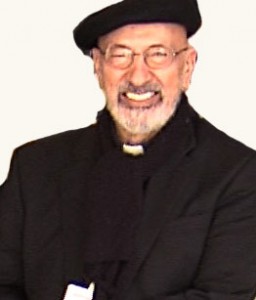 times. Â How are we to understand these readings? Â What did it mean to the people of the Church 2000 years ago? Â What does it mean for us today? Â The Gospel and the words of the Jesus having meaning for the entire world today. Â For those persecuted today, this message is for you!
times. Â How are we to understand these readings? Â What did it mean to the people of the Church 2000 years ago? Â What does it mean for us today? Â The Gospel and the words of the Jesus having meaning for the entire world today. Â For those persecuted today, this message is for you!
Rv 18:1-2, 21-23; 19:1-3, 9a
I, John, saw another angel coming down from heaven,
having great authority,
and the earth became illumined by his splendor.
He cried out in a mighty voice:”Fallen, fallen is Babylon the great.
She has become a haunt for demons.
She is a cage for every unclean spirit,
a cage for every unclean bird,
a cage for every unclean and disgusting beast.”A mighty angel picked up a stone like a huge millstone
and threw it into the sea and said:”With such force will Babylon the great city be thrown down,
and will never be found again.
No melodies of harpists and musicians,
flutists and trumpeters,
will ever be heard in you again.
No craftsmen in any trade
will ever be found in you again.
No sound of the millstone
will ever be heard in you again.
No light from a lamp
will ever be seen in you again.
No voices of bride and groom
will ever be heard in you again.
Because your merchants were the great ones of the world,
all nations were led astray by your magic potion.”After this I heard what sounded like
the loud voice of a great multitude in heaven, saying:“Alleluia!
Salvation, glory, and might belong to our God,
for true and just are his judgments.
He has condemned the great harlot
who corrupted the earth with her harlotry.
He has avenged on her the blood of his servants.”They said a second time:
“Alleluia! Smoke will rise from her forever and ever.”
Then the angel said to me, “Write this:
Blessed are those who have been called
to the wedding feast of the Lamb.”
Jesus said to his disciples:
“When you see Jerusalem surrounded by armies,
know that its desolation is at hand.
Then those in Judea must flee to the mountains.
Let those within the city escape from it,
and let those in the countryside not enter the city,
for these days are the time of punishment
when all the Scriptures are fulfilled.
Woe to pregnant women and nursing mothers in those days,
for a terrible calamity will come upon the earth
and a wrathful judgment upon this people.
They will fall by the edge of the sword
and be taken as captives to all the Gentiles;
and Jerusalem will be trampled underfoot by the Gentiles
until the times of the Gentiles are fulfilled.”There will be signs in the sun, the moon, and the stars,
and on earth nations will be in dismay,
perplexed by the roaring of the sea and the waves.
People will die of fright
in anticipation of what is coming upon the world,
for the powers of the heavens will be shaken.
And then they will see the Son of Man
coming in a cloud with power and great glory.
But when these signs begin to happen,
stand erect and raise your heads
because your redemption is at hand.”
Tags: Church, Jesus, John Esseff, reflection
This entry was posted on Thursday, November 29th, 2012 at 12:43 am
You can follow any responses to this entry through the RSS 2.0 feed.
[powerpress]
Msgr. Esseff continues his reflection on the readings found in the readings of the Church’s liturgy, with a particular 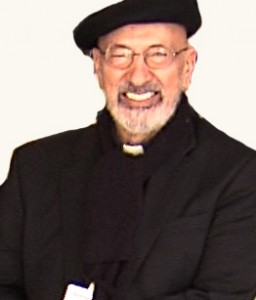 emphasis on the Thanksgiving during these turbulent times. We need to remember that He is not a “tinsel” God…He has power which He passes on to us to draw upon. The power comes from PRAYER! Do you believe that? Jesus invites us to enter through the open door…the open door into His Sacred Heart. Have you entered? Like in the parable given by Jesus in the Gospel, what have done with the “golden coins” you have been given?
emphasis on the Thanksgiving during these turbulent times. We need to remember that He is not a “tinsel” God…He has power which He passes on to us to draw upon. The power comes from PRAYER! Do you believe that? Jesus invites us to enter through the open door…the open door into His Sacred Heart. Have you entered? Like in the parable given by Jesus in the Gospel, what have done with the “golden coins” you have been given?
Tags: catholic, catholic podcast, catholic prayer, cathollc spirituality, Church, Jesus, John Esseff, sacred heart
This entry was posted on Saturday, November 24th, 2012 at 12:52 am
You can follow any responses to this entry through the RSS 2.0 feed.
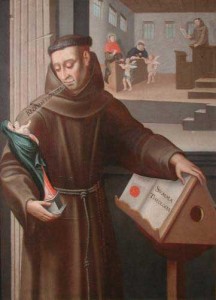 Blessed John Duns Scotus, the teacher of “God’s closeness”. I love the homily below on this great theologian and lover of the Blessed Mother.Â
Blessed John Duns Scotus, the teacher of “God’s closeness”. I love the homily below on this great theologian and lover of the Blessed Mother.Â
CNA- Pope Benedict XVI taught about Franciscan priest and teacher Blessed John Duns Scotus, in one of his Wednesday audiences in July of 2010.  The Holy Father remembered his loyalty and devotion to Christ, the Church and the Successor of St. Peter, as well as his contributions to Christian thought.
During his catechesis, the Pope recalled the life of the medieval Scottish priest and theologian, Blessed John Duns Scotus. He spoke of how the Franciscan, who taught at Oxford, Cambridge, and later in Paris, left France instead of betraying Pope Boniface VIII who was in conflict with King Phillip IV.
This fact, said the Pope, “invites us to remember how many times in the history of the Church, believers have found hostility and promptly even persecution because of their loyalty and devotion to Christ, to the Church and to the Pope.
“We all look with admiration to these Christians, that teach us to protect as a precious inheritance the faith in Christ and the communion with the Successor of Peter and, therefore, with the Universal Church.”
Continuing on the life of the 13th century Franciscan, the Pope said that Blessed Scotus provided three major contributions to Christian thought. The first gift is his “great Christocentric vision” that in the Incarnation “every creature, in and through Christ, is called to be perfected in grace and to glorify God forever.” The second contribution is the theory which led to the dogma “that Our Lady’s preservation from original sin was a privilege granted in view of her Son’s redemptive passion and death.” And finally, Pope Benedict noted his “great attention to the issue of human freedom”as one of his gifts to Christian thought. (more…)
Tags: blessed john duns scotus, blessed mother, Church, death, franciscan priest, homily, love, medieval theologian, pope benedict xvi, theologian
This entry was posted on Thursday, November 8th, 2012 at 4:04 am
You can follow any responses to this entry through the RSS 2.0 feed.
USCCA5- Episode 5-Â I Believe in God
[powerpress]
Archbishop Lucas offers 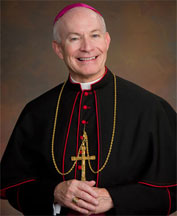 insights on the US Catholic Catechism for Adults Chapter 5:
insights on the US Catholic Catechism for Adults Chapter 5:
Revelation tells us that he living and personal, and profoundly close to us in creating and sustaining us. Though he is totally other, hidden, glorious, and wondrous, he communicates to us through creation us and reveals himself to us through the prophets and above in Jesus Christ, whom we meet in the Church, especially in Scripture and the Sacraments.  In many ways,  God speaks to our hearts where we may welcome his loving presence.
The Most Reverend George J. Lucas leads the Archdiocese of Omaha.Â
For other episodes in the visit our Archbishop George Lucas page
This programs is based on:
More information can be found here.
We wish to thank the USCCB for the permissions granted for use of  relevant material used in this series.
Also we wish to thank Omar Gutierrez and Denise Wharton  for their vocal talents in this episode.
Tags: Archbishop Lucas, Church, creation, USCCB
This entry was posted on Monday, October 15th, 2012 at 12:03 pm
You can follow any responses to this entry through the RSS 2.0 feed.


